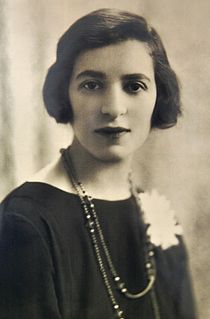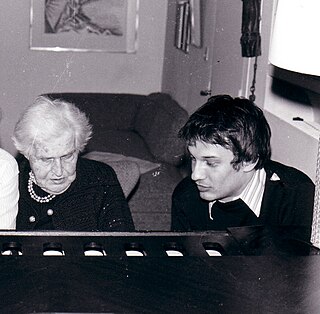
"Les Six" is a name given to a group of six French composers who worked in Montparnasse. The name, inspired by Mily Balakirev's The Five, originates in critic Henri Collet's 1920 article "Les cinq Russes, les six Français et M. Satie". Their music is often seen as a reaction against the musical style of Richard Wagner and the impressionist music of Claude Debussy and Maurice Ravel.

Jean Tardieu was a French artist, musician, poet and dramatic author.
Charles Koechlin, baptized Charles-Louis-Eugène Koechlin, was a French composer, teacher and writer on music. He was a political radical all his life and a passionate enthusiast for such diverse things as medieval music, The Jungle Book of Rudyard Kipling, Johann Sebastian Bach, film stars, traveling, stereoscopic photography and socialism. He once said: "The artist needs an ivory tower, not as an escape from the world, but as a place where he can view the world and be himself. This tower is for the artist like a lighthouse shining out across the world."

Henri Sauguet, was a French composer. Born in Bordeaux as Henri-Pierre Poupard, he adopted his mother's maiden name as his pseudonym. His output includes operas, ballets, four symphonies, concertos, chamber and choral music and numerous songs, as well as film music. Although he experimented with musique concrète and expanded tonality, he remained opposed to particular systems and his music evolved little: he developed tonal or modal ideas in smooth curves, producing an art of clarity, simplicity and restraint.
"Deux poèmes de Lord Byron" are the only known songs set to an English text by Germaine Tailleferre and date from 1934. Although Tailleferre's manuscript has disappeared, a photocopy was found in the papers of the Italian mezzo-soprano and musicologist Patricia Adkins Chiti, who provided a copy which served as the source for their publication in 2003 by the French publisher Musik Fabrik.
"Pancarte pour une porte d'entrée" is a cycle of eleven songs composed by Germaine Tailleferre to the poems of the novelist and poet Robert Pinget written in 1959. The work was published in 2003 by the French publishers Musik Fabrik.
"L'adieu du cavalier" is a song for voice and piano written by Germaine Tailleferre in 1963 on a poem of the same title by Guillaume Apollinaire. The work was published in 2003 by the French publishers Musik Fabrik.
The Sonate champêtre is a chamber work for oboe, B♭ clarinet, bassoon and piano written by Germaine Tailleferre in 1972. The work was published in 2003 by the French publishers Musik Fabrik.
The Intermezzo pour deux pianos is a work written by Germaine Tailleferre in 1946. The work was one of the first written by Tailleferre after she returned to France from her exile in the United States during World War II. The work is dedicated to a friend's recently born twin sons: Christian and Jacques Tual. The work was published in 1999 by the French publisher Musik Fabrik.
The Sonata for Two Pianos is a work by Germaine Tailleferre written in 1974 for the American two-piano team Gold and Fizdale, to whom it is dedicated. The work was published in 1999 by the French music publisher Musik Fabrik.

Marcelle Meyer was a French pianist. She worked with a group of musicians known as Les Six of whom she was the favored pianist.
In classical music, it is relatively rare for a work to be written in collaboration by multiple composers. This contrasts with popular music, where it is common for more than one person to contribute to the music for a song. Nevertheless, there are instances of collaborative classical music compositions.
Les mariés de la tour Eiffel is a ballet to a libretto by Jean Cocteau, choreography by Jean Börlin, set by Irène Lagut, costumes by Jean Hugo, and music by five members of Les Six: Georges Auric, Arthur Honegger, Darius Milhaud, Francis Poulenc and Germaine Tailleferre. The score calls for two narrators. The ballet was first performed in Paris in 1921.
La guirlande de Campra is collaborative orchestral work written by seven French composers in 1952. It is in the form of variations or meditations on a theme from André Campra's 1717 opera Camille, reine des Volsques.
L'Album des Six is a suite of six piano pieces published in 1920 by Eugène Demets, and written by the members of the group of French composers known as Les Six.
Camille, reine des Volsques is an opera by the French composer André Campra, first performed at the Académie Royale de Musique on 9 November 1717. It takes the form of a tragédie en musique in a prologue and five acts. The libretto, by Antoine Danchet, is based on Virgil's Aeneid and concerns the Volscian queen Camilla.





